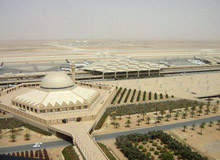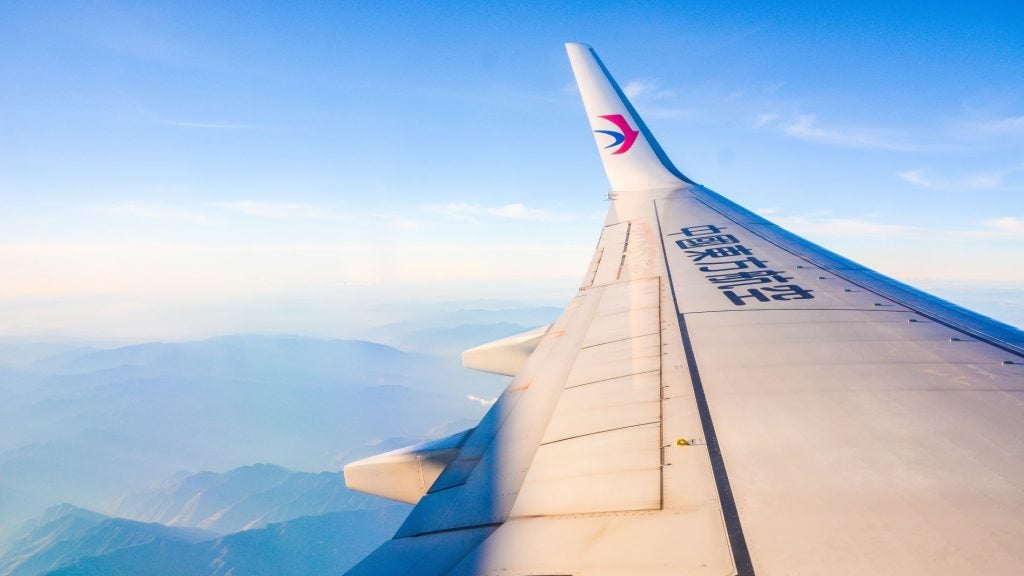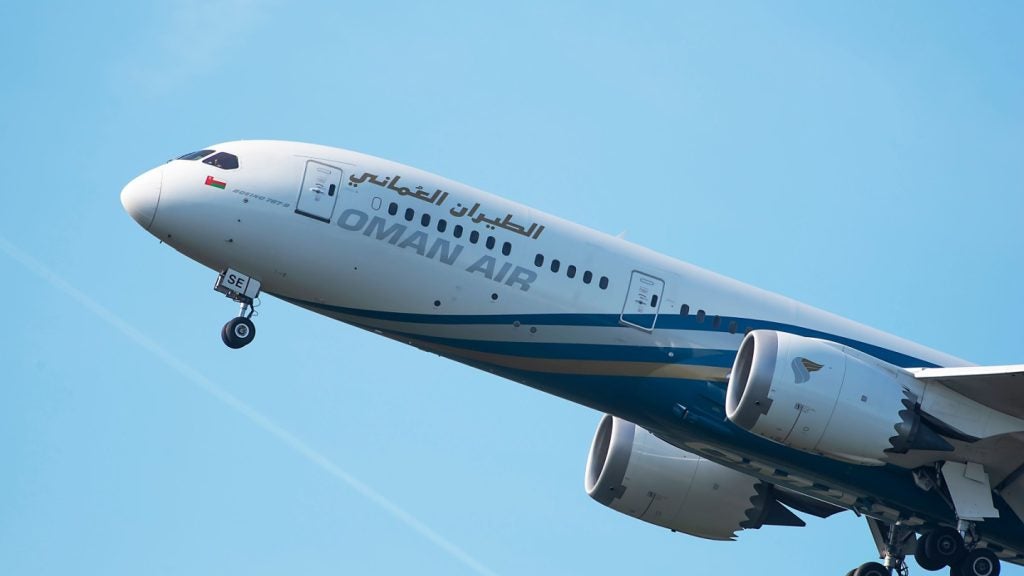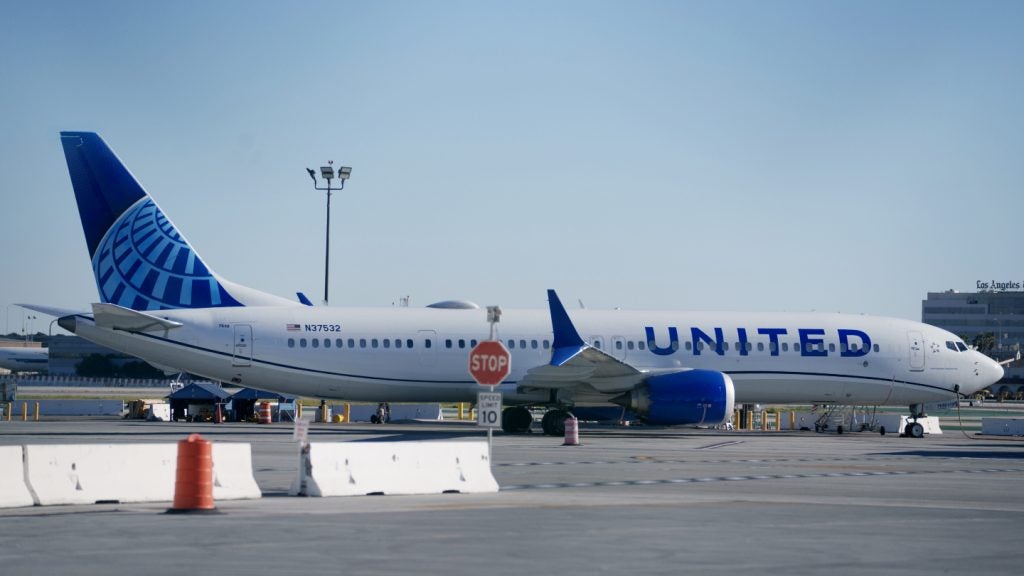
As the largest country in the Middle East, the oil-rich country of the Kingdom of Saudi Arabia (KSA) is an intriguing aviation prospect. While still looking to emulate Dubai or Doha's towering international aspirations, Saudi Arabia also has a more acute focus on serving domestic demand, particularly in Jeddah where millions of Muslim pilgrims pass through once a year to visit the holy cities of Mecca and Medina. Its tight cultural boundaries also differentiate the country from some of its more liberal neighbours, posing distinct challenges to its aviation aspirations.
Since the turn of this century the country's three major international airports have begun a notable period of rejuvenation as instigated by the KSA General Authority of Civil Aviation (GACA). With Riyadh's King Khaled International Airport being the governmental heartbeat of the country, King Fahd International Airport in Damman being its industrial centre and King Abdulaziz International Airport in Jeddah serving as the Kingdom's religious cornerstone, each airport has key individual requirements to fulfil.
It is hoped the combined effect of all three airport expansions will help create a gateway into Saudi Arabia and mark its intention of becoming a major international player.
The Kingdom's total future capacity from the main three airports will weigh in at about 140 million passengers each year, which will be driven by the rapidly growing Saudi-Arabian population and oil-strong economy. However, even with the necessary airport infrastructure in place, Saudi Arabia's ability to compete with the likes of Dubai maybe determined more by regulatory fields.
King Abdulaziz and airport design in the Middle East
See Also:
King Abdulaziz International Airport, which was officially opened in April 1981, first announced its major expansion programme back in September 2000. Estimated to increase capacity from about 13 million passengers to approximately 25 million the project includes the development of a new terminal as well as an extension to the existing southern terminal to overcome capacity constraints until the new terminal is complete.
How well do you really know your competitors?
Access the most comprehensive Company Profiles on the market, powered by GlobalData. Save hours of research. Gain competitive edge.

Thank you!
Your download email will arrive shortly
Not ready to buy yet? Download a free sample
We are confident about the unique quality of our Company Profiles. However, we want you to make the most beneficial decision for your business, so we offer a free sample that you can download by submitting the below form
By GlobalDataPlanning activities effectively began in 2003, meaning completion is currently scheduled for 2011. Dutch airport consultancy company NACO has recently been involved with the master plan at King Abdulaziz International Airport. It also has ongoing involvement with the master plans at King Fahd International Airport and King Khaled International Airport.
The 40 years' experience NACO possess in the country's airport sector has given it a unique perspective on recent developments and allowed it to tackle such big design projects with the sensitivity required to work in the Kingdom's unique environment.
NACO manager of master planning and studies Kjell Kloosterziel says a close working relationship with GACA is one of the reasons for such a long-standing presence in the Kingdom.
"Since 1965 we have completed 108 projects at 34 airports in the Middle East, so the region is obviously of great importance to us," Kloosterziel says.
"We align very well with GACA and have developed a similar working mentality over the years. A number of the airports that were constructed in Saudi Arabia in the early 1980s became operational and then over the course of the following 20 years were slowly developed as traffic development failed to grow as fast as initially expected, which is now no longer the case."
NACO completed its consultation of the King Abdulaziz airport at the end of 2007. This encompassed processes such as projected traffic forecasts and stakeholder consultation. But in many ways, the development of such an airport is unique to other such constructions around the world, due to religious, infrastructure and climate constraints.
"When we first started this project demand was already exceeding capacity at Jeddah airport so temporary measures were installed to cope, which included the expansion at the south terminal," Kloosterziel says. "Substantial research was then required for the master plan, which was complicated further by the presence of a military base at the airport that was also looking to expand. Likewise, a sewage treatment plant was already proposed for the exact location where we wanted to develop the access road for the new terminal, but eventually all these issues were overcome."
NACO also had to consider where to dedicate space for each facility – from the terminal itself through to the maintenance aircraft facility and cargo facilities. After designing the layout plans for each area and making the floor plans for the terminal they made cost estimates to understand the financial feasibility of the entire project.
"To prove the potential of the hub, we also conducted a connectivity study of the main airports in the Middle East, such as Dubai and Doha to compare the projects," Kloosterziel says.
Although the master-planning stage of the airport is not heavily influenced by the KSA's arid climate and rich culture, certain considerations must be taken into account in preparation for the subsequent design stage. This is particularly relevant when it comes to the length of the runways, which are dictated by the region's staggering heat. Surprisingly, drainage systems on the runway are also given priority: "This is very important as well because when it rains in the Middle East it tends to pour," Kloosterziel says.
On top of this, religious and cultural factors must be incorporated into the planning of the facilities as mosques of course must be included and in Saudi Arabia special lanes must be planned for women. "The standards for handling goods are also very different from practises in the western world," Kloosterziel says.
"Checkpoints are found at the very beginning of airports in the Middle East and so space must be reserved accordingly. The military have a strong presence at
Middle Eastern airports and must be accommodated, so overall you can see there are quite a number of important culture issues that must be considered when planning such an airport."
Another way in which airport standards in the Middle East differ from the western world is found with issues such as noise pollution and environmental conscious practices. The wider availability of land and space combined with the presence of air conditioning in each home means noise pollution has less of an impact on the surrounding area of an airport.
"In 2005, environmental guidelines for the country's airport sector were being developed and although they have yet to be completed – we did have the draft version during the master planning stage. However, we also loosely followed European guidelines and pointed out potential hazards which were ultimately taken onboard," Kloosterziel says.
Damman gets Riyadh for action
A similar approach will be adopted for NACO's consultancy contracts with King Khaled International Airport and King Fahd International Airport. The company has been employed to help determine the technical and strategic guidelines for future improvements and expansions to the airport.
"In August 2008, we signed the contracts for Saudi Arabia's two other major international airports in Riyadh and Damman and have recently finished the traffic forecasts for each," says Kloosterziel. "While the processes for both were the same as the ones we used in Jeddah, the specific roles and structures of the airports will be very different. Riyadh is focusing on becoming a regional hub so will require a facility that caters for many domestic connections. Damman on the other hand has to compete with neighbouring Bahrain's airport and is aiming to do so by placing a strong focus on cargo."
With Riyadh aiming to increase capacity from about 14 million passengers a year to about 40 million passengers annually by 2038 and Damman aiming to jump from about four million to approximately 22 million by the same year, aspirations are set high.
Despite being the world's largest airport in terms of land area, King Fahd airport looks set to be trumped in terms of future passenger figures by Jeddah's King Abdulaziz. Largely underlying this fact is the development of a new economic city in
proximity to Jeddah alongside the growing importance of the airport as an entrance to the holy cities of Mecca and Medina.
"The expansion at King Abdulaziz will bring domestic benefits to Saudi Arabia, increase the attractiveness level of the airport itself and also enhance convenience for Muslim pilgrims," Kloosterziel says.
With such a strong period of airport growth still ahead, Saudi Arabia appears to be making huge strides towards cementing its position both globally and in the Middle East, despite the challenges its environment poses – naturally, culturally and legislatively.







